The Ram in a Thicket, also known as “Ram Caught in a Thicket,” is one of a pair of identical figures excavated in 1928 in one of the graves in the Royal Cemetery in Ur, southern Iraq.
The excavation of these tombs was a collaborative project between the University of Pennsylvania Museum of Archeology and Anthropology and the British Museum, led by the renowned British archaeologist and scholar in the ancient art of Mesopotamia, Sir Leonard Woolley. It is believed that the figures have been constructed between 2600-2400 BCE.
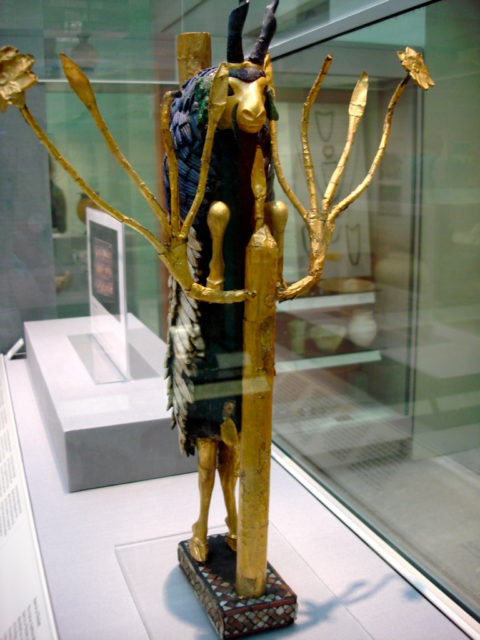
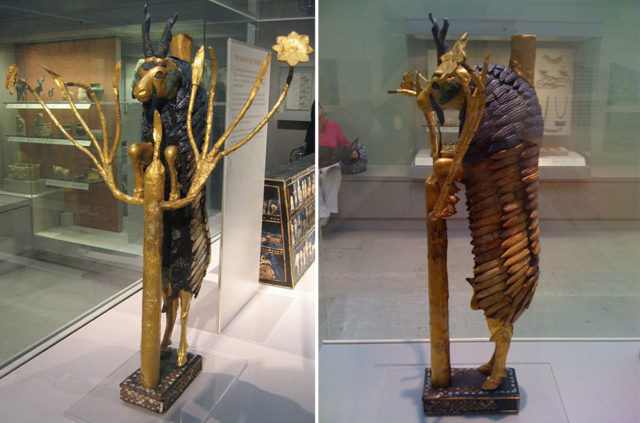
The figures were lying closely together in the ‘Great Death Pit,’ one of the sixteen ‘Royal Tombs’ at Ur where archaeologists have also found bodies of dozens of royal servants.
Woolley dubbed this statuette the “Ram Caught in a Thicket” in reference to the passage in the Old Testament Book of Genesis 22:13 because he believed that it was an allusion to the biblical story of Abraham.
In the story, Abraham found a ram caught in a thicket by his horns and sacrificed it instead of his son Isaac.
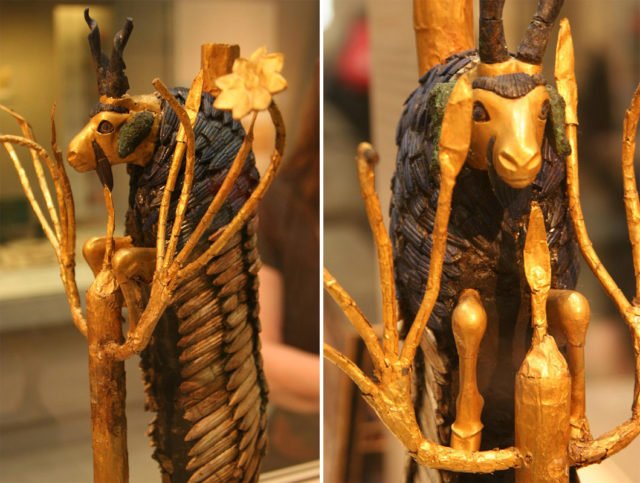
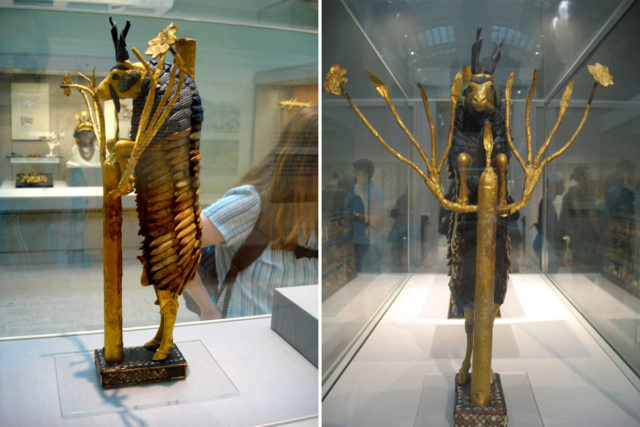
The sculpture measures about 16 inches in height and it was made of a variety of materials – the fleece, the horns, and the eyes are made of lapis lazuli, the ears are made of copper, while the wood, which is overlaid with gold, was used for the ram’s head, legs, and the flowering tree.
When Woolley discovered the figures, they were smashed so he used wax to keep all the pieces together.
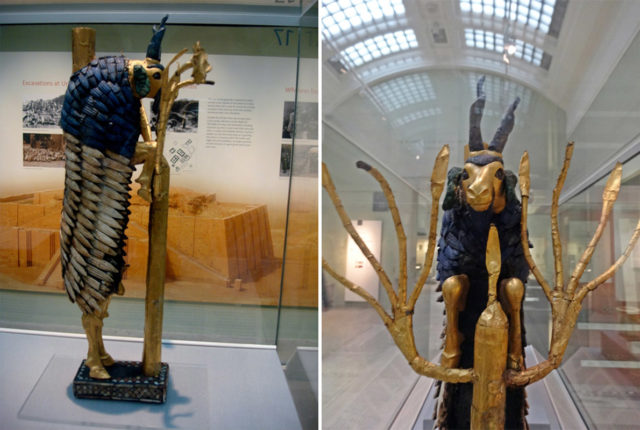
The statue was probably used for decorative purposes, but archaeologists also believe that it was one of the several symbols associated with the fertility of the land.
Read another story from us: The most dramatic tomb in Père Lachaise cemetery
One of the statues is currently exhibited in London, as part of the permanent collection of prehistoric art at the British Museum, while the other is located in Philadelphia, at the University of Pennsylvania Museum of Archeology & Anthropology.
